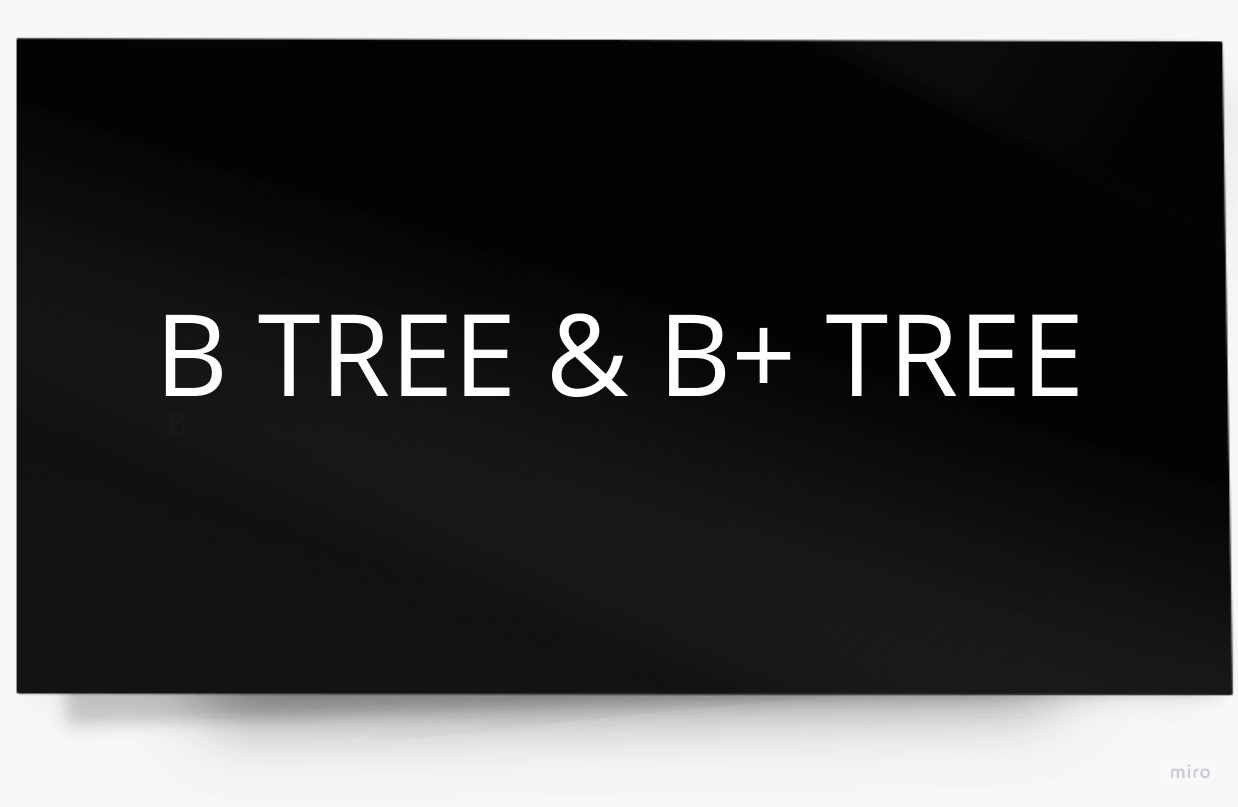Application of B and B+ Tree
 Abeeb Raheem
Abeeb RaheemTable of contents

B and B+ trees are data structures that are commonly used in computer science and information technology. These trees are used to store and organize large amounts of data in a way that allows for efficient searching and retrieval. In this essay, we will explore the application of B and B+ trees in various fields and the advantages and disadvantages of B and B+ trees.
Introduction
One of the most common applications of B and B+ trees is in databases. Databases are used to store large amounts of data, and B and B+ trees are used to organize this data in a way that allows for efficient searching and retrieval. B trees are used to store data in a balanced tree structure, where each node contains a range of keys and pointers to child nodes. This allows for efficient searching of the data, as the search can be narrowed down to a specific range of keys. B+ trees are similar to B trees, but they have additional pointers to leaf nodes, which contain the actual data. This allows for faster retrieval of the data as the leaf nodes can be accessed directly.
Another application of B and B+ trees is in file systems. File systems are used to organize and store files on a computer's hard drive. B and B+ trees are used to organize the files in a way that allows for efficient searching and retrieval. In file systems, B+ trees are commonly used, as they allow for fast retrieval of files based on their names or other attributes.
B and B+ trees are also used in networking applications. For example, they are used in routers to store routing tables. Routing tables are used to determine the best path for data to travel through a network. B and B+ trees are used to organize the routing table in a way that allows for efficient searching and retrieval of the best path for the data.
Advantages of B and B+ Trees
Efficient Searching: B and B+ trees are designed to provide efficient searching of data. The balanced tree structure of B trees allows for quick access to data, as the search can be narrowed down to a specific range of keys. B+ trees are even more efficient, as they have additional pointers to leaf nodes, which contain the actual data. This allows for faster retrieval of the data, as the leaf nodes can be accessed directly.
Scalability: B and B+ trees are scalable data structures, which means that they can handle large amounts of data without compromising performance. As the size of the data increases, the height of the tree increases, but the number of nodes accessed during a search remains the same. This makes B and B+ trees ideal for applications that require the storage and retrieval of large amounts of data.
Flexibility: B and B+ trees are flexible data structures, which means that they can be used in a variety of applications. They are commonly used in databases, file systems, and networking applications to store and organize large amounts of data in a way that allows for efficient searching and retrieval.
Disadvantages of B and B+ Trees
Complexity: B and B+ trees are complex data structures, which means that they can be difficult to implement and maintain. The algorithms used to insert, delete, and search for data in B and B+ trees can be complex, and require a deep understanding of the data structure.
Overhead: B and B+ trees have a certain amount of overhead associated with them. This overhead includes the storage space required for the tree structure, as well as the time required to maintain the tree structure. This overhead can be significant, especially for applications that require the storage and retrieval of large amounts of data.
Limited Use Cases: B and B+ trees are unsuitable for all applications. For example, they are not well-suited for applications that require frequent updates to the data, as the tree structure must be rebalanced after each update. Additionally, B and B+ trees are not well-suited for applications that require the storage of non-numeric data, as the tree structure is designed to work with numeric keys.
Searching Example on a B+ Tree
Let us search for k = 45 on the following B+ tree.

Compare k with the root node.

Since k > 25, go to the right child.

Compare k with 35. Since k > 30, compare k with 45.

Since k ≥ 45, so go to the right child.

k is found

In conclusion, B and B+ trees are versatile data structures with many advantages and disadvantages. They are efficient, scalable, and flexible, but can be complex, have overhead, and are not suitable for all applications. As with any data structure, the choice to use B or B+ trees depends on the specific requirements of the application. In conclusion, B and B+ trees are versatile data structures with many applications in computer science and information technology. They are commonly used in databases, file systems, and networking applications to store and organize large amounts of data in a way that allows for efficient searching and retrieval. As technology continues to advance, it is likely that B and B+ trees will continue to play an important role in the storage and organization of data.
Subscribe to my newsletter
Read articles from Abeeb Raheem directly inside your inbox. Subscribe to the newsletter, and don't miss out.
Written by
